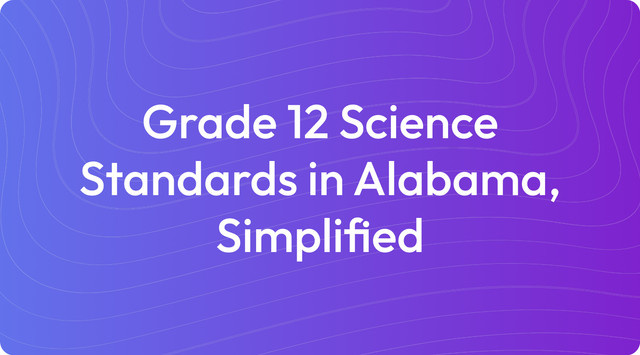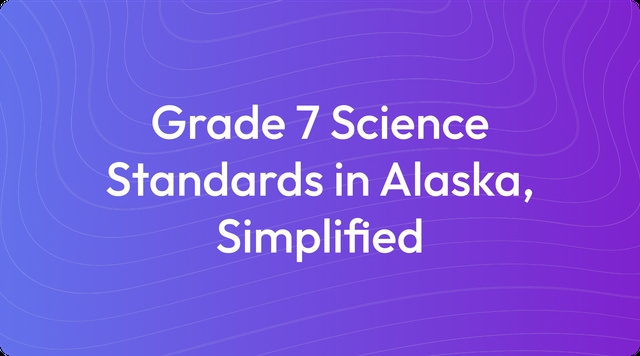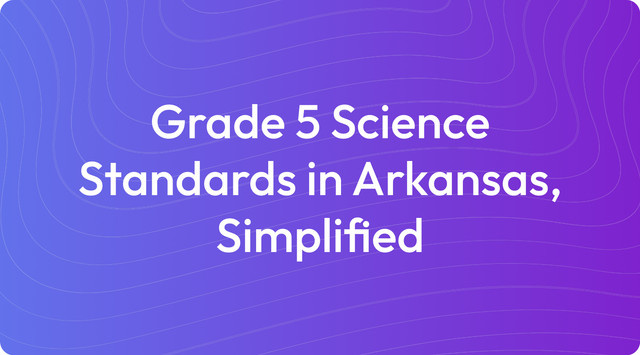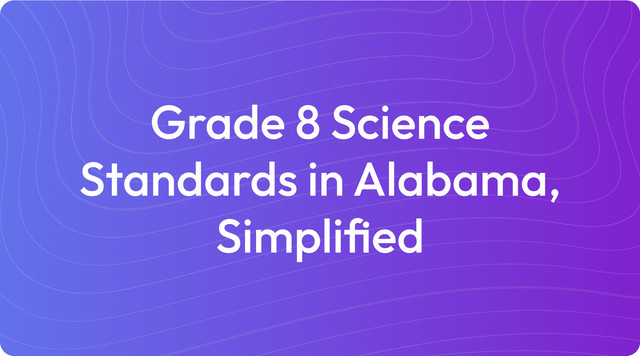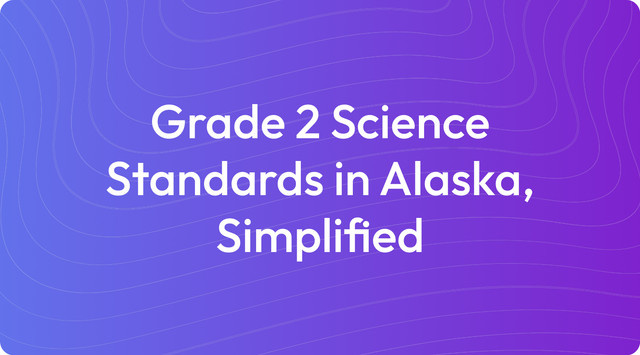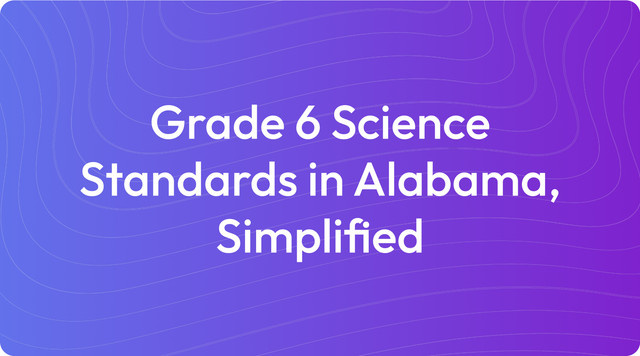Grade 11 Science Standards in California, Simplified
Grade 11 science in California includes chemistry and physics basics. For details, read more on TeachShare!
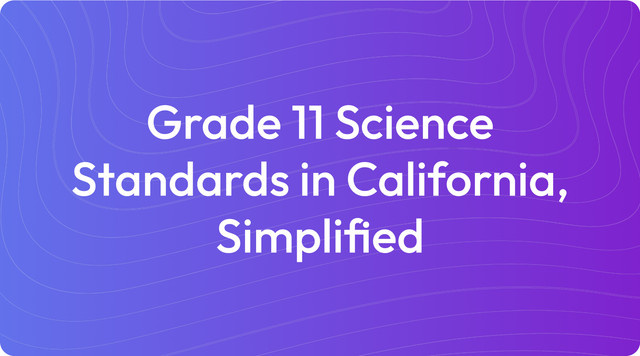
We understand that working with state and national standards can be a complex part of curriculum planning. Our goal is to provide resources that help you understand these frameworks and apply them effectively in your classroom. Think of this as a practical guide to connecting standards to your daily instruction.
Education standards are a set of learning goals that outline what students should know and be able to do at each grade level. For teachers, they provide clear benchmarks for student progress but do not dictate specific teaching methods, offering flexibility in how you design your lessons. For instance, California's Grade 11 Science Standards specify that students should be able to develop models of atomic nuclei changes or evaluate evidence about environmental changes, guiding instruction in advanced science topics.
What Are Grade 11 Science Standards in California?
The Grade 11 Science Standards in California, based on the California Next Generation Science Standards (CA NGSS), focus on advanced concepts in physical science, life science, and earth science. These standards are designed to build on foundational knowledge from earlier grades, preparing your students for college-level courses and careers in STEM fields.
Here is an outline of the key areas covered in the Grade 11 standards:
- Physical Science (PS): Advanced Chemistry and Physics
- PS1: Matter and Its Interactions
- HS-PS1-8: Develop models to illustrate the changes in atomic nuclei during fission, fusion, and radioactive decay.
- HS-PS1-5: Apply scientific principles to explain how temperature, concentration, and surface area affect reaction rates.
- PS3: Energy
- HS-PS3-5: Develop and use models of two objects interacting through electric or magnetic fields to illustrate the forces involved.
- PS4: Waves and Their Applications
- HS-PS4-3: Evaluate the advantages and disadvantages of using different technologies (e.g., fiber optics, radio waves) for transmitting information.
- PS1: Matter and Its Interactions
- Life Science (LS): Genetics, Evolution, and Ecosystems
- LS1: From Molecules to Organisms
- HS-LS1-4: Use a model to illustrate how cellular division (mitosis) and differentiation produce and maintain complex organisms.
- LS3: Heredity: Inheritance and Variation
- HS-LS3-2: Make and defend a claim based on evidence that environmental and genetic factors affect the growth of organisms.
- LS4: Biological Evolution
- HS-LS4-5: Evaluate evidence supporting claims that changes in environmental conditions may result in species adaptation, migration, or extinction.
- LS1: From Molecules to Organisms
- Earth and Space Science (ESS): Climate, Resources, and Human Impact
- ESS2: Earth’s Systems
- HS-ESS2-6: Develop a quantitative model to describe the cycling of carbon among Earth’s spheres (e.g., atmosphere, hydrosphere, biosphere, geosphere).
- ESS3: Human Activity and Sustainability
- HS-ESS3-1: Construct an explanation based on evidence for how natural resources, natural hazards, and climate change influence human activity.
- HS-ESS3-4: Evaluate or refine a technological solution that reduces human impact on natural systems.
- ESS2: Earth’s Systems
- Engineering, Technology, and Applications of Science (ETS): Problem-Solving
- ETS1: Engineering Design
- HS-ETS1-3: Evaluate a solution to a complex real-world problem based on prioritized criteria and trade-offs.
- HS-ETS1-4: Use a computer simulation to model the impact of proposed solutions to a real-world problem.
- ETS1: Engineering Design
- Key Crosscutting Concepts (CCCs)
- Cause and Effect: Analyzing how small changes can have large impacts on systems (e.g., climate change, genetic mutations)
- Energy and Matter: Tracking how energy flows and matter cycles within systems like ecosystems or chemical reactions
- Stability and Change: Exploring how systems maintain balance or adapt to disturbances over time
The framework for these standards is guided by the California Next Generation Science Standards, which are organized into topic arrangements across scientific disciplines.
Key Tested Standards
The Grade 11 standards emphasize students' ability to apply scientific principles, analyze data, and solve problems. Assessments are designed to measure not just what students know, but what they can do with their knowledge in practical, real-world contexts. This approach helps ensure they are prepared for future academic and professional challenges.
Here are the key tested standards, aligned with the California Next Generation Science Standards (CA NGSS):
Physical Science (PS): Matter, Energy, and Waves
- HS-PS1-8: Nuclear Reactions - Developing models that show changes in atomic nuclei from fission, fusion, and radioactive decay
- HS-PS1-5: Reaction Rates - Applying scientific principles to explain how temperature, concentration, and surface area influence reaction rates
- HS-PS3-5: Electric and Magnetic Forces - Developing and using models to show the forces between objects that interact through electric or magnetic fields
- HS-PS4-3: Wave Technology - Evaluating the pros and cons of different technologies, like fiber optics and radio waves, for information transmission
Life Science (LS): Genetics, Evolution, and Ecosystems
- HS-LS1-4: Cell Division and Differentiation - Using a model to show how cellular division (mitosis) and differentiation create and sustain complex organisms
- HS-LS3-2: Genetics and Environmental Influence - Making and defending a claim with evidence that both environmental and genetic factors impact how organisms grow
- HS-LS4-5: Adaptation and Extinction - Evaluating evidence for claims that changes in the environment can cause species to adapt, migrate, or become extinct
Earth and Space Science (ESS): Climate, Resources, and Sustainability
- HS-ESS2-6: Carbon Cycle - Developing a model that describes how carbon cycles through Earth’s spheres (atmosphere, hydrosphere, biosphere, and geosphere)
- HS-ESS3-1: Natural Resources and Human Activities - Constructing an explanation based on evidence for how natural resources, hazards, and climate change affect human activities
- HS-ESS3-4: Sustainability and Technology - Evaluating or improving a technological solution that lessens human impact on natural systems
Engineering and Technology (ETS): Problem Solving
- HS-ETS1-3: Evaluating Solutions - Evaluating a solution to a complex, real-world problem by considering prioritized criteria, trade-offs, and limitations
- HS-ETS1-4: Simulating Solutions - Using computer simulations to model the effects of proposed solutions for real-world problems
This information is compiled from guidelines provided by the California Department of Education and the Next Generation Science Standards (NGSS).
Example Learning Objectives for Unit Planning
Learning objectives are clear, student-focused statements that describe what learners will be able to do by the end of a lesson. They help break down broad standards into manageable, measurable goals for your classroom instruction, aligning with the three-dimensional learning approach of the NGSS.
Standard: HS-PS1-8
(Develop models to illustrate the changes in atomic nuclei during fission, fusion, and radioactive decay.)
Learning Objectives:
- I can describe what happens to an atom’s nucleus during fission, fusion, and radioactive decay.
- I can create a model (e.g., a diagram or simulation) to show how nuclear changes release or absorb energy.
- I can explain the real-world applications of nuclear reactions, like in power plants or the Sun’s energy production.
- I can compare the processes of fission and fusion and identify where each occurs in nature or technology.
Standard: HS-LS4-5
(Evaluate evidence that changes in environmental conditions may result in species adaptation, migration, or extinction.)
Learning Objectives:
- I can analyze data to identify how environmental changes, like climate shifts or habitat loss, affect species.
- I can explain how species adapt to changes in their environment over time or why some species migrate or go extinct.
- I can evaluate real-world examples of species impacted by environmental changes, such as polar bears or coral reefs.
- I can use evidence to support a claim about how human activity has influenced species survival or extinction.
Key Changes & Updates
The Grade 11 Science Standards, aligned with the California Next Generation Science Standards (CA NGSS), reflect a significant update in how science is taught. The main change is the adoption of three-dimensional learning, which combines scientific practices (what students do), crosscutting concepts (how students think), and disciplinary core ideas (what students know). This framework moves instruction toward hands-on, inquiry-based activities centered on real-world applications. Your students are encouraged to engage directly with science by designing experiments, building models, and analyzing data, making learning more relevant and practical.
These updates also formally integrate engineering design (ETS) into the curriculum, prompting students to solve complex problems. There is a greater focus on systems thinking, which helps students understand the interconnectedness of physical, living, and Earth systems. Students are now expected to construct evidence-based explanations for scientific phenomena, connecting their work to skills in math and literacy. This approach is designed to build critical thinking skills and prepare students for advanced coursework and future STEM careers.
Create with TeachShare
We know that turning these complex standards into engaging, classroom-ready materials takes time you don't always have. Our platform is designed to support you by providing tools that help you build high-quality, standards-aligned resources efficiently. We handle the heavy lifting of resource creation, so you can focus more on what you do best: teaching. Start creating standards-aligned instructional resources with TeachShare now.
Frequently Asked Questions
1. What are the main topics covered in Grade 11 Science?
Grade 11 science in California covers advanced topics across several key areas:
- Physical Science: Nuclear processes like fission and fusion, chemical reaction rates, and energy and wave interactions.
- Life Science: Cell division, genetic variation, environmental effects on growth, evolution, and adaptation.
- Earth and Space Science: The carbon cycle, human activity, and sustainability.
- Engineering Design: Designing and testing solutions to real-world problems, such as pollution or renewable energy.
2. What’s different about the NGSS compared to previous standards?
The Next Generation Science Standards (NGSS) shift the focus of science education. Here are the key differences:
- Three-Dimensional Learning: This approach combines Science and Engineering Practices, Crosscutting Concepts, and Disciplinary Core Ideas.
- Real-World Connections: Lessons are tied to everyday phenomena like climate change or genetics, making learning more relevant.
- Hands-On Exploration: Students learn by doing, through active experiments, modeling, and problem-solving.
- Integrated Engineering: Students are asked to design and evaluate solutions to scientific challenges.
3. How do these standards prepare students for real-world applications?
These standards are designed to connect classroom concepts directly to practical, real-world challenges. For example, students will explore:
- How nuclear energy is generated and its potential uses.
- Why genetic variation is important for species survival in changing environments.
- How to design solutions for sustainability, such as renewable energy or clean water systems.
- The role of technologies like fiber optics in modern communication.
4. Why is engineering included in Grade 11 Science?
Including engineering in the science curriculum serves a few important purposes:
- It teaches students to apply scientific principles to solve practical problems.
- It fosters creativity and critical thinking as students design, test, and improve their solutions.
- It shows the direct link between science, technology, and daily life, which helps prepare students for future STEM careers.
5. How are students assessed in Grade 11 Science?
Assessment moves beyond traditional tests to measure a student's practical understanding. Common assessment methods include:
- Experiments: Conducting hands-on investigations into topics like reaction rates or energy transfer.
- Models: Creating diagrams or simulations to explain concepts like the carbon cycle or mitosis.
- Data Analysis: Interpreting and graphing data from their experiments or from case studies.
- Evidence-Based Explanations: Writing scientific arguments that are supported by data.
Answer


